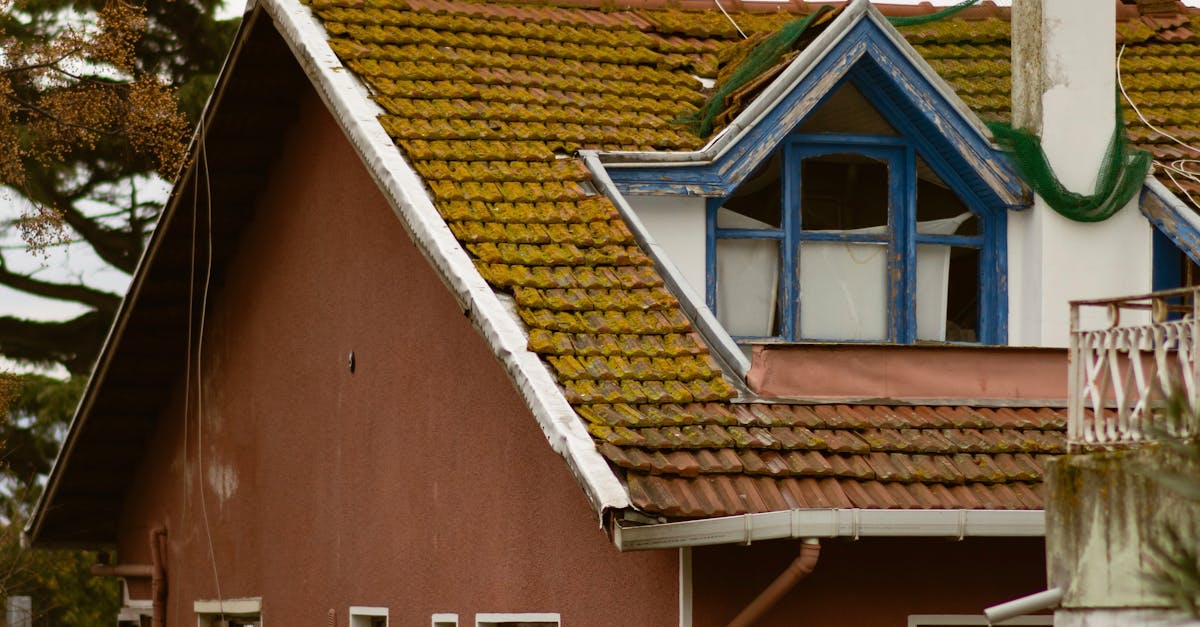Hiring a Professional for Colorbond Roof Replacement on Clay Tiles

Table Of Contents
EcoFriendly Aspects of Colorbond
Colorbond roofing is an excellent choice for homeowners looking to make eco-friendly decisions when it comes to their roofing materials. One key aspect of Colorbond that makes it environmentally friendly is its recyclability. Colorbond roofs are made from a high percentage of recycled materials, which helps to reduce the demand for new resources and minimizes waste sent to landfills.
In addition to its recyclability, Colorbond roofs are also highly durable, which means they have a longer lifespan compared to traditional roofing materials. This longevity reduces the need for frequent roof replacements, ultimately decreasing the overall environmental impact associated with roof maintenance.Overall, choosing Colorbond for roof replacement not only benefits the homeowner but also contributes to a more sustainable and eco-friendly approach to roofing.
Sustainable Roofing Option
Colorbond roofs stand out as a sustainable roofing option due to their long lifespan and recyclability. Compared to traditional clay tiles that may need replacement every few decades, Colorbond roofs can last upwards of 50 years with proper maintenance. This durability reduces the need for frequent replacements, ultimately leading to less material wastage and overall environmental impact.
In addition to their longevity, Colorbond roofs are also environmentally friendly in terms of their production process. The material is made from a significant portion of recycled steel, making it a sustainable choice for homeowners looking to reduce their carbon footprint. Furthermore, Colorbond roofs are fully recyclable at the end of their lifespan, contributing to a closed-loop system that minimises waste and promotes eco-conscious living.
Difference in Insulation Properties
Colorbond roofs offer superior insulation properties compared to clay tiles. This means that Colorbond roofs are effective in keeping homes cool during hot Australian summers and warm during chilly winters. The construction of Colorbond roofs allows for better regulation of indoor temperatures, leading to reduced reliance on air conditioning and heating systems, resulting in potential energy savings for homeowners.
The insulation properties of Colorbond roofs also help in reducing noise pollution from external sources such as heavy rainfall, hail, or strong winds. This ensures a quieter and more peaceful indoor environment for occupants. Additionally, the insulation provided by Colorbond roofs contributes to overall energy efficiency in homes, making them a sustainable roofing option for environmentally-conscious homeowners.
Improved Energy Efficiency with Colorbond
Colorbond roofing offers improved energy efficiency compared to traditional clay tiles. Due to its reflective properties, Colorbond can help to reduce heat absorption, keeping your home cooler in summer and reducing the need for air conditioning. This can lead to lower energy bills and a more comfortable living environment throughout the year.
Additionally, Colorbond roofs can contribute to better insulation in your home. The material retains heat during colder months, helping to keep the interior warm and reducing the reliance on heating systems. This enhanced insulation not only improves energy efficiency but also minimises your carbon footprint, making Colorbond a sustainable choice for homeowners looking to reduce their environmental impact.
Potential Challenges of Colorbond Installation
Installing Colorbond roofing can come with its fair share of challenges that homeowners need to be aware of. One of the main issues that can arise during the installation process is ensuring a proper fit and alignment of the Colorbond sheets. This requires precision and expertise to avoid any gaps or overlaps that could compromise the structural integrity of the roof.
Another challenge that may be faced during Colorbond installation is related to the existing roof structure. Compatibility between the Colorbond material and the underlying support system needs to be carefully assessed to ensure a secure and durable installation. Additionally, factors such as roof pitch, ventilation, and insulation requirements must be considered to guarantee the longevity and performance of the Colorbond roofing system.
Dealing with Clay Tile Removal
When it comes to carrying out a Colorbond roof replacement on clay tiles, one of the crucial steps is dealing with the removal of the existing tiles. This process requires careful handling to ensure that the underlying structure is not damaged in the process. Hiring a professional for this task is highly recommended to guarantee a smooth and efficient removal process.
The removal of clay tiles can be a labor-intensive process that requires specialized equipment and expertise. Professionals experienced in Colorbond roof replacements will have the necessary tools and skills to tackle this job effectively. By entrusting this task to skilled professionals, homeowners can rest assured that the clay tile removal will be carried out safely and efficiently, setting the stage for a successful transition to a Colorbond roof.
FAQS
Why should I consider hiring a professional for Colorbond roof replacement on clay tiles?
Hiring a professional ensures that the installation is done correctly, minimizing the risk of issues in the future.
Is Colorbond a sustainable roofing option?
Yes, Colorbond is a sustainable roofing option as it is 100% recyclable and has a long lifespan, reducing waste and environmental impact.
What are the insulation properties of Colorbond compared to clay tiles?
Colorbond has better insulation properties compared to clay tiles, helping to improve energy efficiency in your home.
What challenges may arise during Colorbond installation over clay tiles?
Some potential challenges include the removal of existing clay tiles and ensuring proper installation of the Colorbond material.
How can professionals help in dealing with the removal of clay tiles during Colorbond installation?
Professionals have the expertise and tools to safely remove clay tiles without causing damage to the roof structure, ensuring a smooth transition to Colorbond.
Related Links
DIY Colorbond Roof Replacement on Clay Tiles: Pros and ConsMaintenance Tips for Colorbond Roof Replacement on Clay Tiles
Longevity of Colorbond Roof Replacement on Clay Tiles
Environmental Impact of Colorbond Roof Replacement on Clay Tiles
Choosing the Right Color for Colorbond Roof Replacement on Clay Tiles
Cost Comparison: Colorbond Roof Replacement vs. Clay Tiles Replacement
Disadvantages of Colorbond Roof Replacement for Clay Tiles
Steps for Colorbond Roof Replacement on Clay Tiles